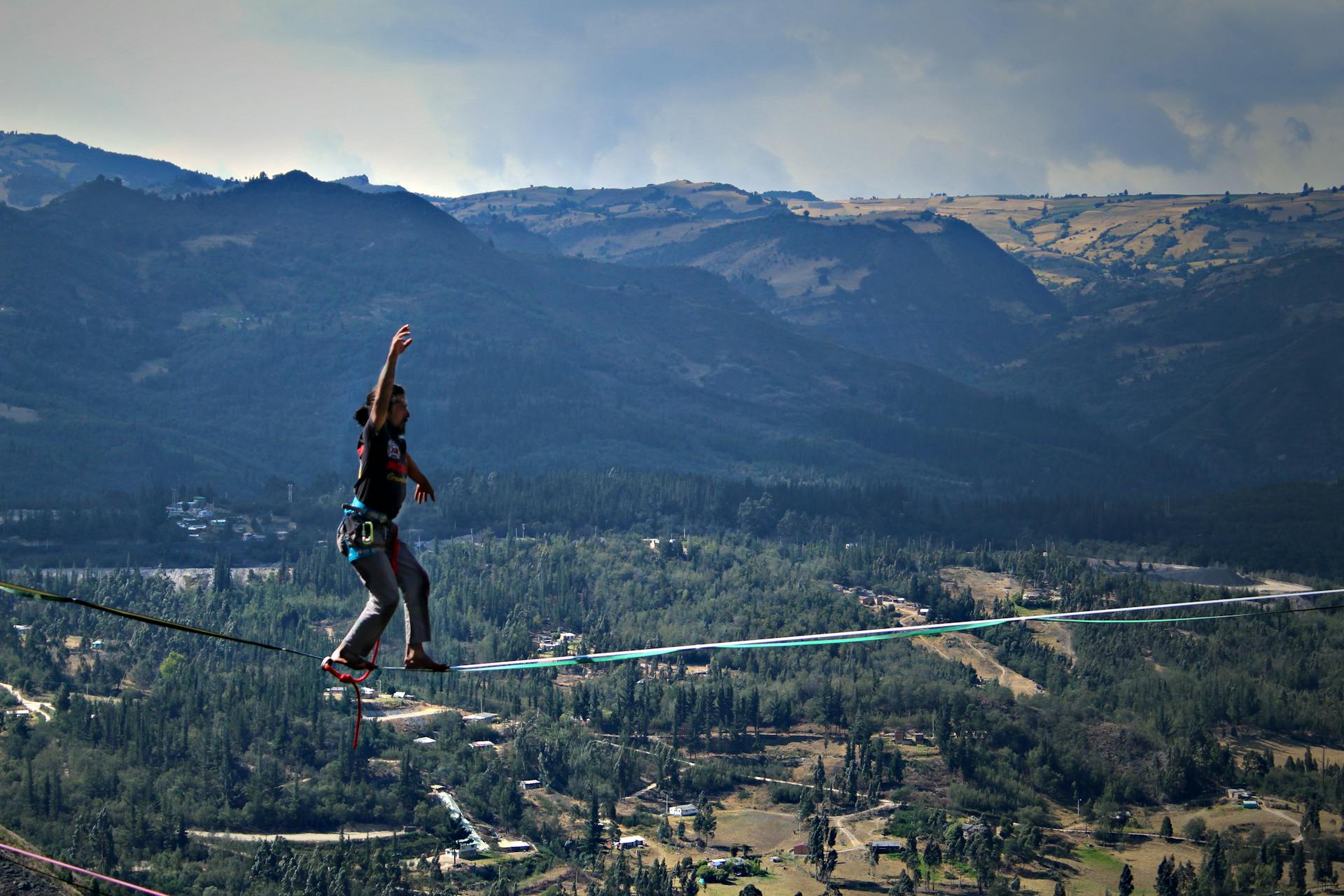Competitive Slacklining for Beginners is a thrilling and fun-filled journey that’s the perfect combination of balance and tricks. If you’ve ever seen slackliners perform jaw-dropping stunts on a flat line, you’ll know how exciting it can be. It can be daunting for beginners, but if you focus on basic techniques and practice consistently, you’ll be ready for competitions. The first thing you should do is understand the proper use of your gear and try to find balance. You can boost your confidence by trying beginner-friendly tricks like knee drops and butt bounces.
Having the proper gear for slacklining is very important. Choosing a durable slackline and reliable anchors can enhance your performance. Also, incorporating exercises like strength training and yoga into your routine is important to improve core strength and flexibility. Joining local slacklining communities will provide you with valuable tips and opportunities for new experiences. So if you’re ready to begin your journey in Competitive Slacklining for Beginners, these tips and techniques will be the perfect starting point for you!
Understand the Basics of Slacklining
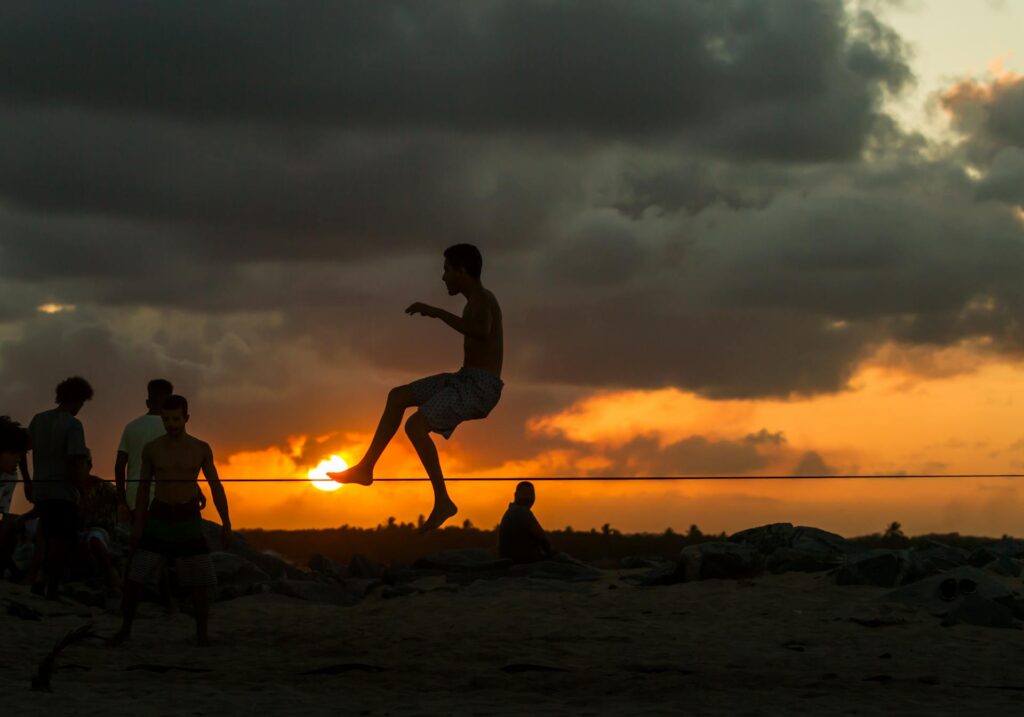
What is Slacklining?
Slacklining is a unique and dynamic sport in which balance and movement are practiced on a thin, flexible strap. The strap is tightly tensioned between two anchors, providing a bounce like a trampoline and a challenge like a tightrope. Competitive Slacklining for Beginners It is important to understand that slacklining is not just a game of balance, but also an art of trickery and control.
Difference Between Recreational and Competitive Slacklining
Recreational slacklining is a fun and casual activity in which people practice balance and basic movements. It places more emphasis on relaxation and fitness. Similarly, competitive slacklining is a high-energy and skill-based activity that places importance on tricks and performance along with balance. Competitions allow you to showcase your technical skills, creativity and stage presence, which can be an exciting challenge for beginners.
Types of Slacklining Setups Used in Competitions
There are different types of setups for competitive slacklining that make the dynamics of the sport more challenging. Tricklining is the most common, where there is more tension on the slackline and tricks are performed. Highlining is another type that tests balance and focus at height. Lowline setups are best for beginners as they are ideal for safety and practice. Understanding these setups for Competitive Slacklining for Beginners will better prepare you for competitions.
Invest in the Right Gear
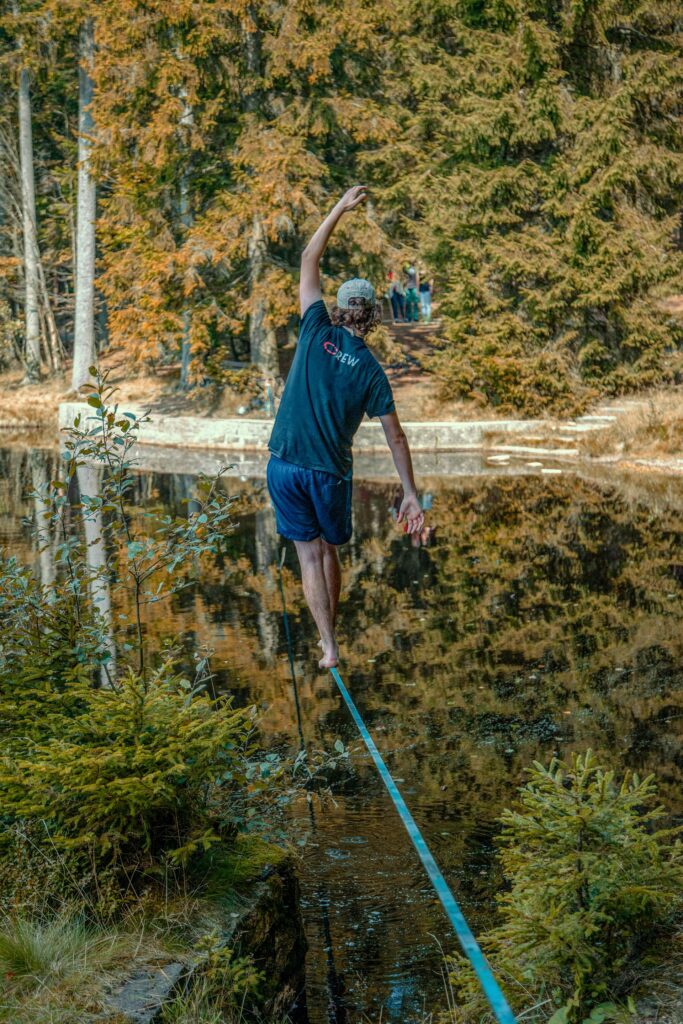
Investing in the right gear is important to get started slacklining. There is some essential equipment for beginners, such as slackline kits and anchors. These kits will help you get off to a good start and make your practice easier. When you’re choosing competition-level slacklines, keep in mind that the quality of your slackline is very important. Good quality slacklines are more durable and easier to balance on.
Safety gear is also important, such as crash pads and tensioning systems. Crash pads provide safety if you fall, reducing your risk of injury. Tensioning systems are also important as they help to properly stretch and maintain the slackline. When you go slacklining, safety comes first. So choosing the right gear and using safety equipment will enhance your experience and make you have more fun! This way you can practice as best you can, without any tension!
Learn the Art of Balance
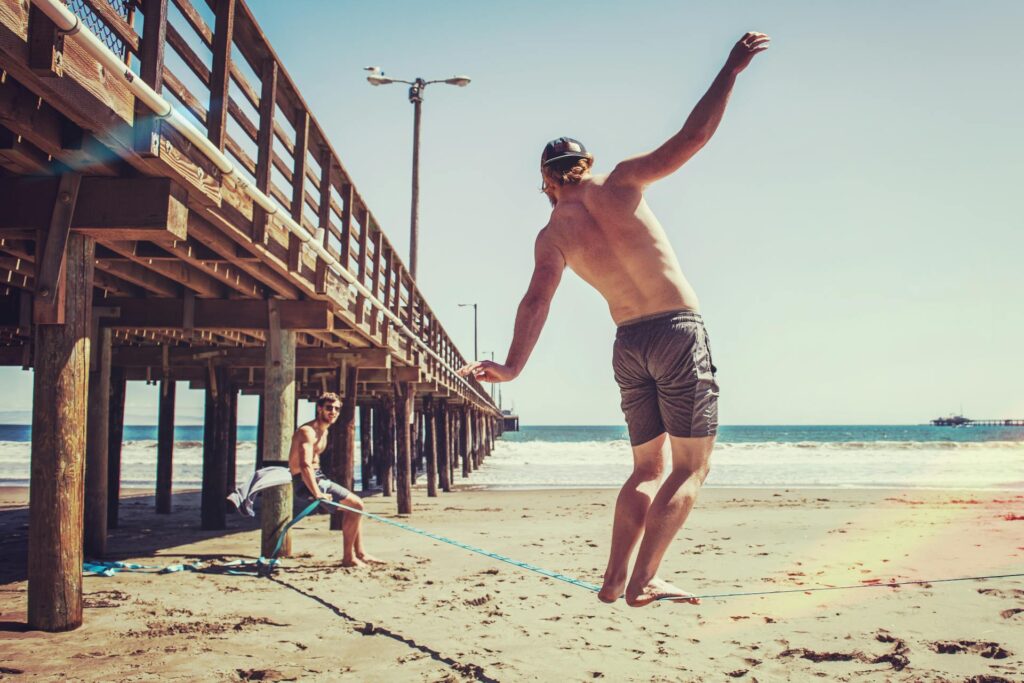
Mastering balance on a slackline starts with core strength and stability exercises. Work on planks and side planks to engage your midsection. Practice single-leg stands to improve balance on each leg. These exercises build the foundation for staying centered on the line. Focus on your breath while walking. Keeping your gaze fixed ahead helps maintain focus and reduces distractions. Adjustments in your arms and legs help correct your position. Find your center by engaging your core and relaxing your shoulders. Regular practice will enhance your balance and control.
Start with Beginner-Friendly Tricks
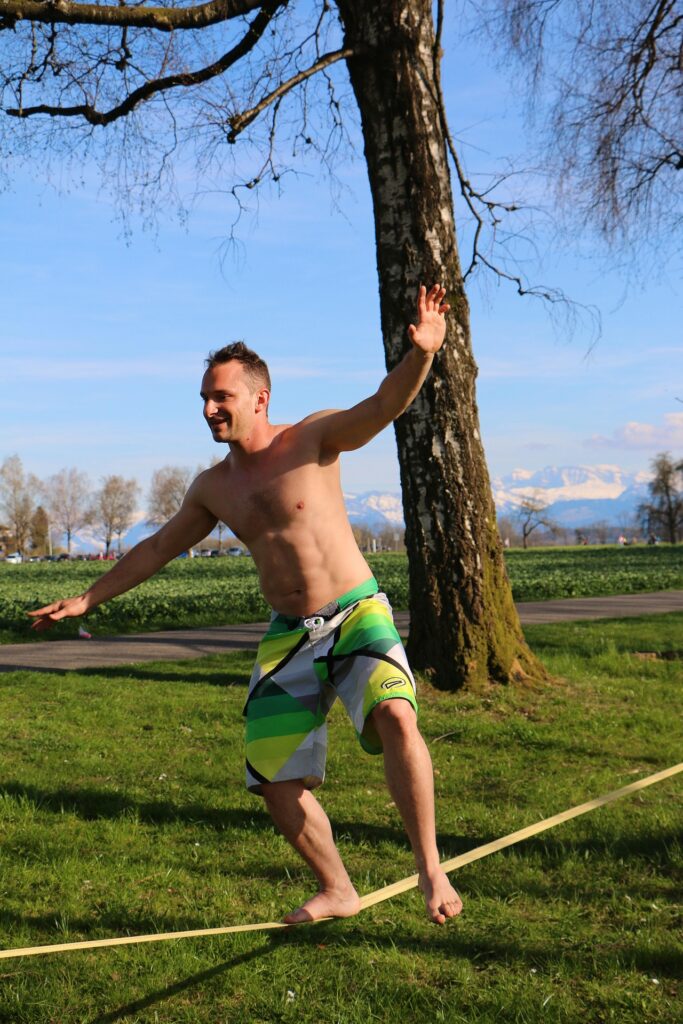
Initially, start with simple tricks. Tricks like the knee drop and butt bounce are perfect for beginners. In the knee drop, you place one knee on the line and balance on the other. In the butt bounce, you sit on the line and bounce up and down.
To learn these tricks, start slowly at first. For the knee drop, first place one knee on the line and try to balance on the other for a while. Then slowly practice lowering the knee up and down. To do a butt bounce, first sit on the line and try to balance, then slowly start bouncing up and down. While doing the trick, pay special attention to safety. Keep a soft surface underneath like grass or a crash pad. Have an experienced slackliner spot you, i.e. catch you just in case you fall.
Build Strength and Flexibility
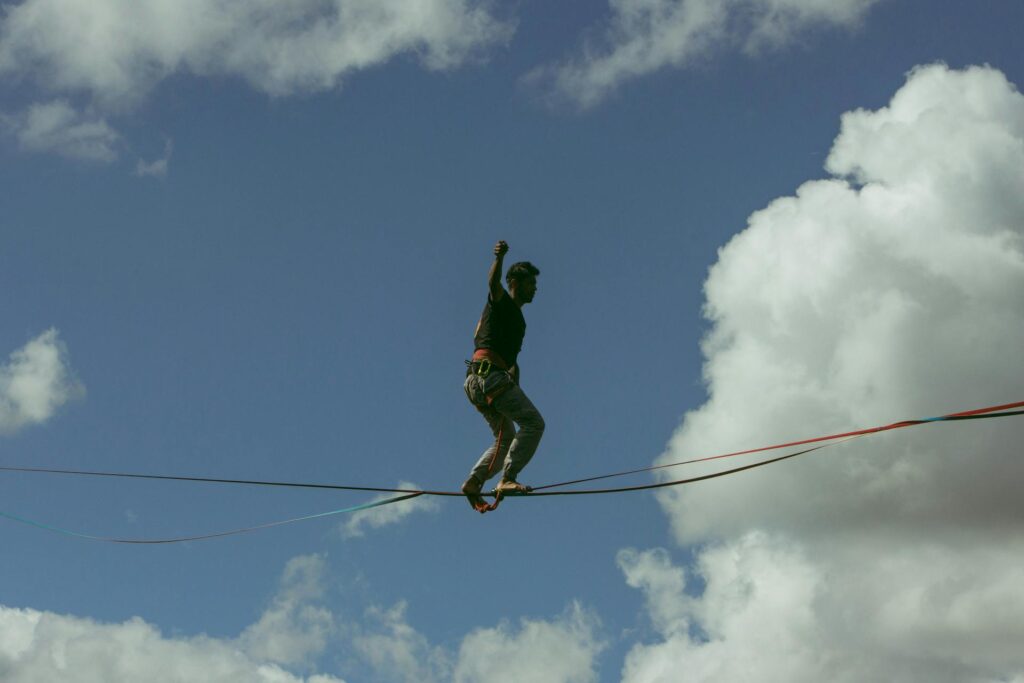
Physical fitness plays a huge role in competitive slacklining. Your strength and flexibility enhance your balance and control, which are essential for success in this sport. So, do some strength training and stretching exercises to improve your fitness.
Strength training exercises like squats, lunges, and planks target your core muscles. These exercises help give you more power and stability, which are essential for moving on a slackline. You can make your workout even more challenging by using resistance bands or weights. Stretching exercises also help increase your flexibility. Stretching the hamstrings, calves, and hip flexors improves your range of motion, which helps you maintain better balance on the slackline.
Yoga is also a great option that helps improve both your flexibility and focus. Poses like Downward Dog, Warrior II, and Tree Pose also relax your body and increase your concentration. Regular practice can prepare you both physically and mentally for competitive slacklining!
Practice in a Variety of Settings
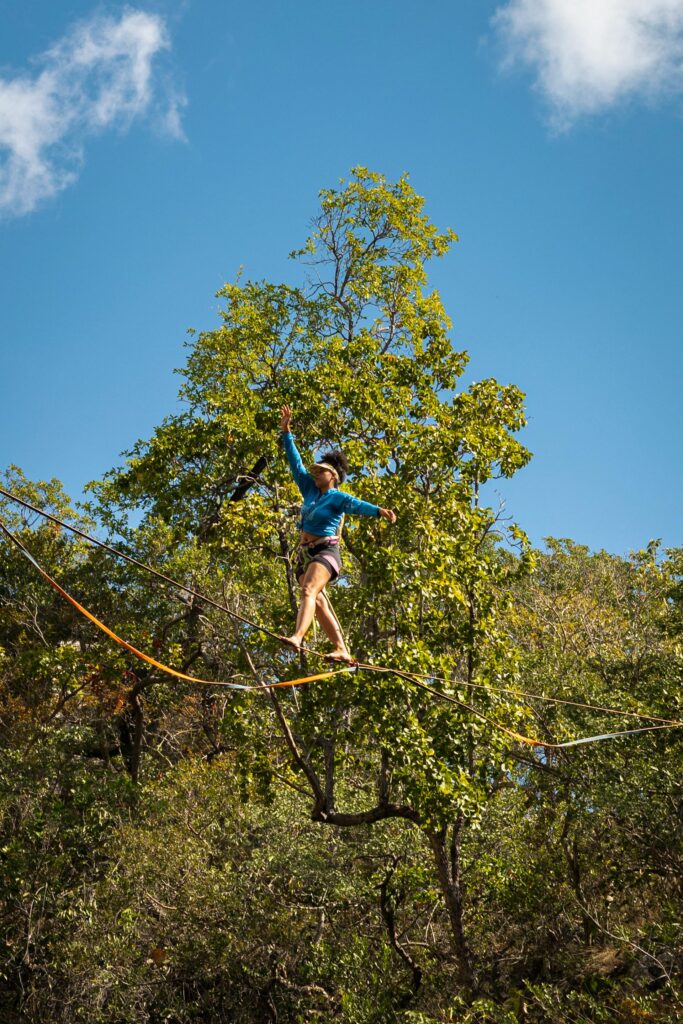
Practicing in diverse environments is crucial for becoming a well-rounded slackliner. Setting up lines on different surfaces like grass, wood, and even water significantly enhances balance and adaptability. Varying line tensions and heights challenges your body and mind, improving your overall control and stability. Additionally, practicing in windy conditions or on uneven terrain prepares you for unpredictable competition scenarios.
Joining a local slacklining community or club offers invaluable benefits. You gain access to experienced slackliners who can provide guidance, spot you during challenging tricks, and share valuable tips. Collaborating with others fosters a supportive environment, pushing you to try new things and improve your skills. Moreover, participating in local jams or competitions allows you to experience different setups, learn from other athletes, and gain valuable competition experience.
Mental Preparation for Competitions
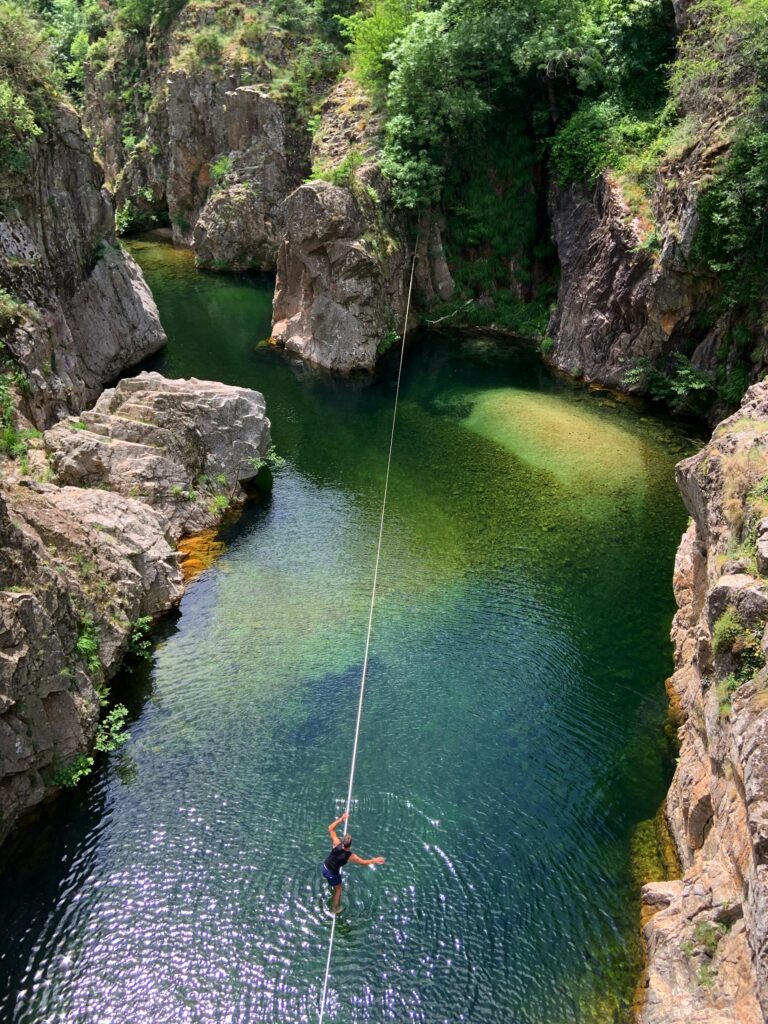
Overcoming Fear and Nervousness on the Slackline
Fear and nervousness are common feelings when you get on the Slackline, especially when you are heading towards competition. The first step for Competitive Slacklining for Beginners is to understand your fear and overcome it. You can control your anxiety by using deep breathing exercises and focus techniques. Setting small goals during practice and achieving them will boost your confidence.
Visualization Techniques to Build Confidence
Visualization is a powerful tool that is very helpful for beginners. Imagine in your mind that you are balancing on the slackline and confidently performing tricks. Make it a part of your routine to create a scene of your perfect performance in your mind for 5-10 minutes daily. This technique will not only improve your focus but also make you self-assured during competition.
Tips for Staying Calm Under Pressure
Staying calm during competitions is a skill that develops with practice. Focus on your breathing and see the pressure as a positive challenge. If you make a mistake on the line, consider it a learning experience and bring your focus back on line. Self-compassion and positive thinking are very helpful in Competitive Slacklining for Beginners. Always remember, a calm mind can take your performance to the next level.
Join Slacklining Competitions
Joining slacklining competitions is a great way to further enhance your skills. If you’re a beginner, you should look for beginner-friendly competitions. These competitions are not too stressful and provide a supportive environment. You can learn about these competitions by searching local slacklining clubs, social media groups, or online forums.
You may be nervous as much as you have fun at your first competition. But don’t worry! All participants are just like you – they are learning and improving their skills. You are there to meet and learn from other slackliners.
In competitions you will have the chance to be inspired by other people. By observing their techniques and approaches you can get new ideas for yourself. This experience will give you confidence and allow you to be part of the slacklining community. This way, you can make new connections with friends while improving your skills! So, get ready and participate in the competition!
Conclusion
Competitive Slacklining for Beginners is a thrilling and rewarding journey that tests your balance, focus, and creativity. Through this article, we have shared essential tips for beginners that will not only help you understand the basics but also prepare you for the competitions. From choosing the right gear and mastering beginner-friendly tricks to building mental resilience and confidence, every step will make your slacklining journey even more engaging.
Remember, consistent practice and patience are the most important factors for the success of this sport. Slacklining is not just a physical activity but also a mental game in which you have to overcome your fear and perform your best tricks. If you strengthen your basics during the journey of Competitive Slacklining for Beginners and practice regularly, then your performance can standout in the competitions.

